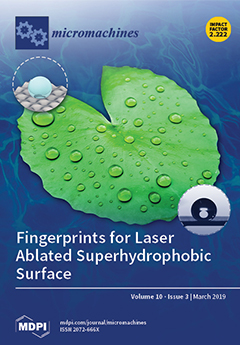Open AccessFeature PaperReview
Development of the Troponin Detection System Based on the Nanostructure
by
Taek Lee, Jae-Hyuk Ahn, Jinha Choi, Yeonju Lee, Jin-Myung Kim, Chulhwan Park, Hongje Jang, Tae-Hyung Kim and Min-Ho Lee
Cited by 23 | Viewed by 5379
Abstract
During the last 30 years, the World Health Organization (WHO) reported a gradual increase in the number of patients with cardiovascular disease (CVD), not only in developed but also in developing countries. In particular, acute myocardial infarction (AMI) is one of the severe
[...] Read more.
During the last 30 years, the World Health Organization (WHO) reported a gradual increase in the number of patients with cardiovascular disease (CVD), not only in developed but also in developing countries. In particular, acute myocardial infarction (AMI) is one of the severe CVDs because of the high death rate, damage to the body, and various complications. During these harmful effects, rapid diagnosis of AMI is key for saving patients with CVD in an emergency. The prompt diagnosis and proper treatment of patients with AMI are important to increase the survival rate of these patients. To treat patients with AMI quickly, detection of a CVD biomarker at an ultra-low concentration is essential. Cardiac troponins (cTNs), cardiac myoglobin (cMB), and creatine kinase MB are typical biomarkers for AMI detection. An increase in the levels of those biomarkers in blood implies damage to cardiomyocytes and thus is related to AMI progression. In particular, cTNs are regarded as a gold standard biomarker for AMI diagnosis. The conventional TN detection system for detection of AMI requires long measurement time and is labor-intensive and tedious. Therefore, the demand for sensitive and selective TN detection techniques is increasing at present. To meet this demand, several approaches and methods have been applied to develop a TN detection system based on a nanostructure. In the present review, the authors reviewed recent advances in TN biosensors with a focus on four detection systems: (1) An electrochemical (EC) TN nanobiosensor, (2) field effect transistor (FET)-based TN nanobiosensor, (3) surface plasmon resonance (SPR)-based TN nanobiosensor and (4) surface enhanced Raman spectroscopy (SERS)-based TN nanobiosensor.
Full article
►▼
Show Figures






